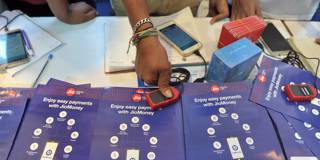As countries focus on “building back better” after the pandemic, they have a crucial opportunity to leapfrog to a more digital economy – and to do so responsibly. Whichever model they choose, governments can transform the lives of people everywhere by building digital ID systems designed to maximize privacy, inclusion, and trust.
WASHINGTON, DC – COVID-19 has tested the ability of governments to deliver financial and other forms of support to vulnerable people. Although 200 countries and territories have planned or implemented social-protection measures in response to the pandemic, many governments have struggled to identify informal workers who are not covered by existing welfare programs or social-security schemes for formal-sector employees. Social-distancing rules and quarantines have made it even more challenging to help those in need.

WASHINGTON, DC – COVID-19 has tested the ability of governments to deliver financial and other forms of support to vulnerable people. Although 200 countries and territories have planned or implemented social-protection measures in response to the pandemic, many governments have struggled to identify informal workers who are not covered by existing welfare programs or social-security schemes for formal-sector employees. Social-distancing rules and quarantines have made it even more challenging to help those in need.